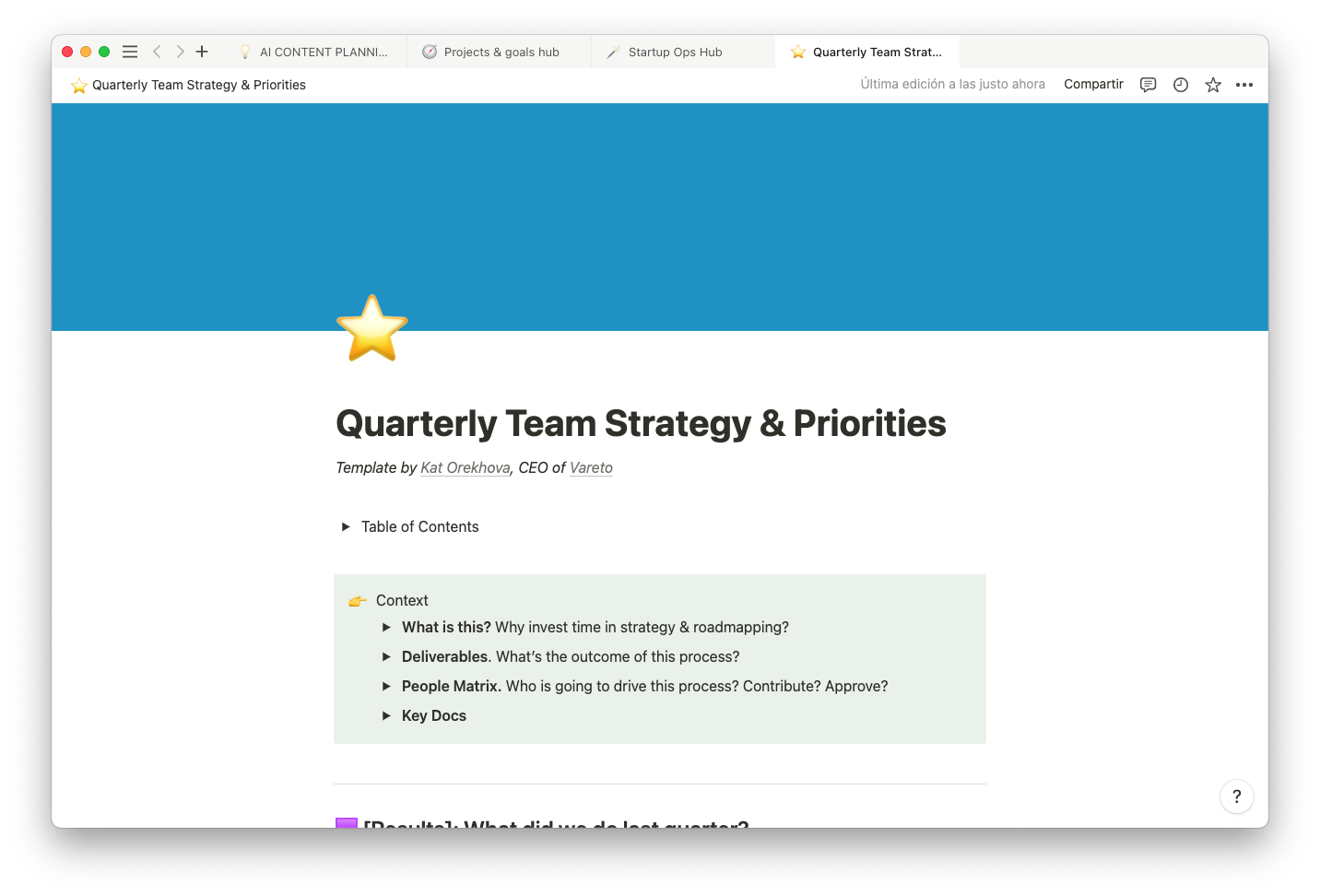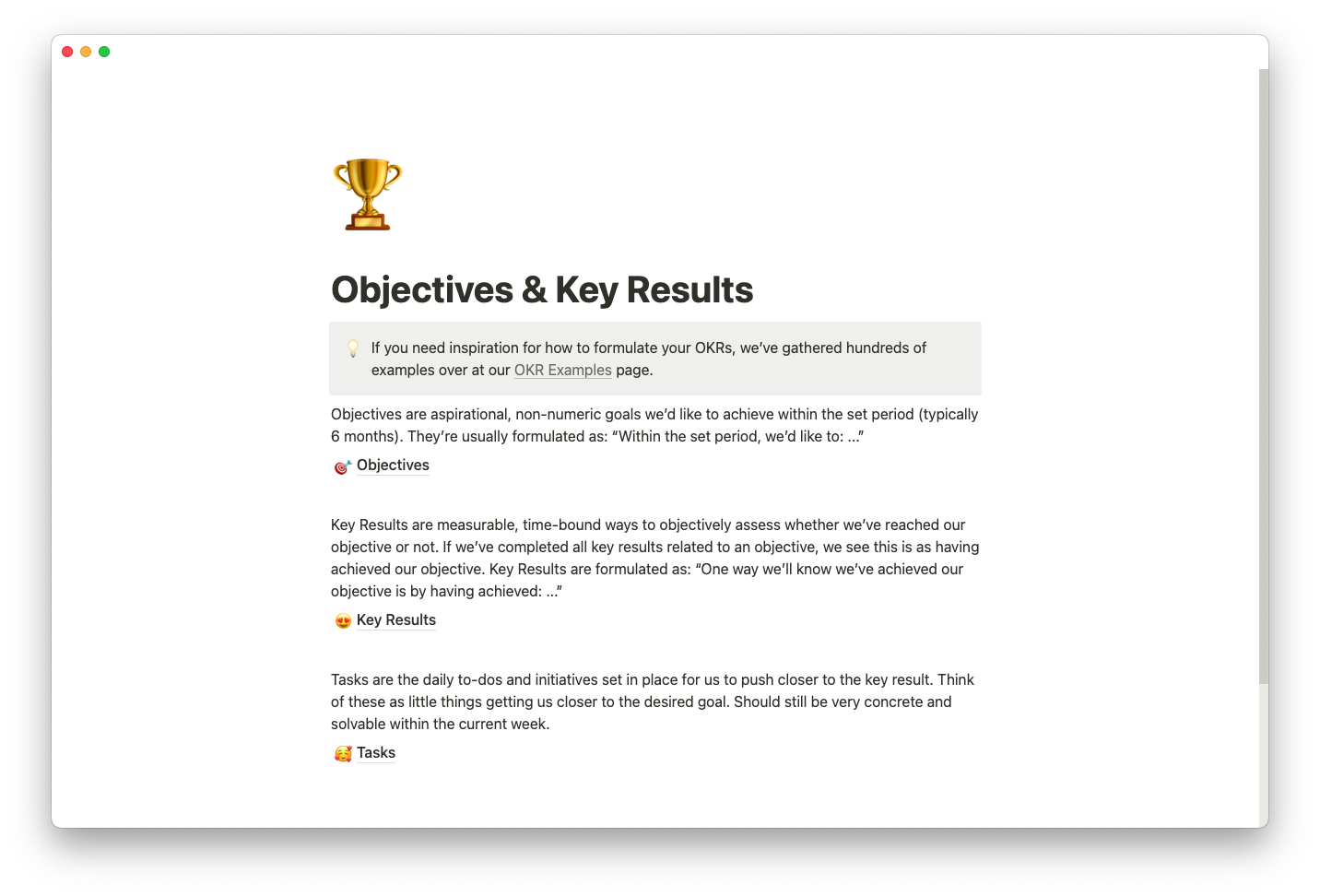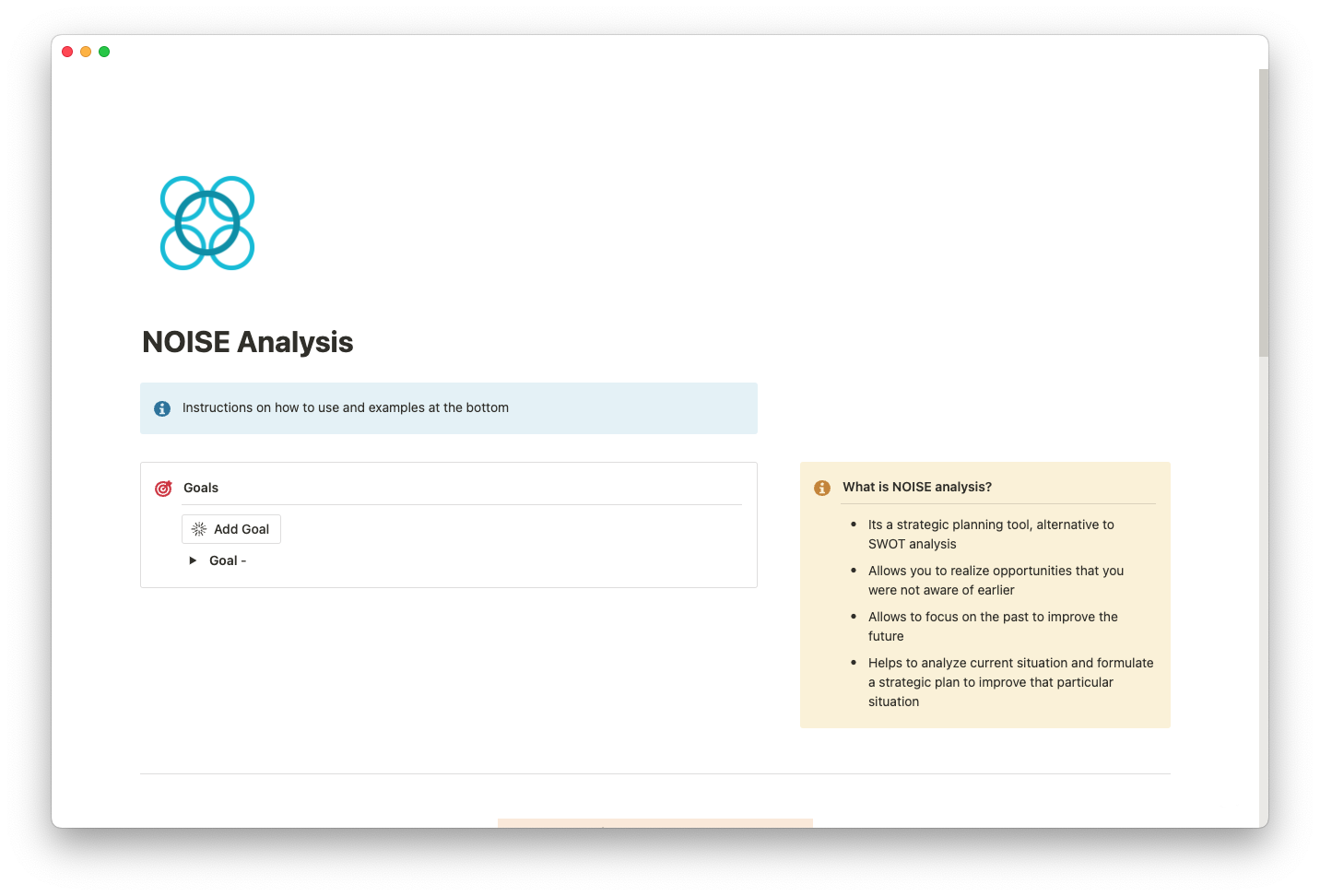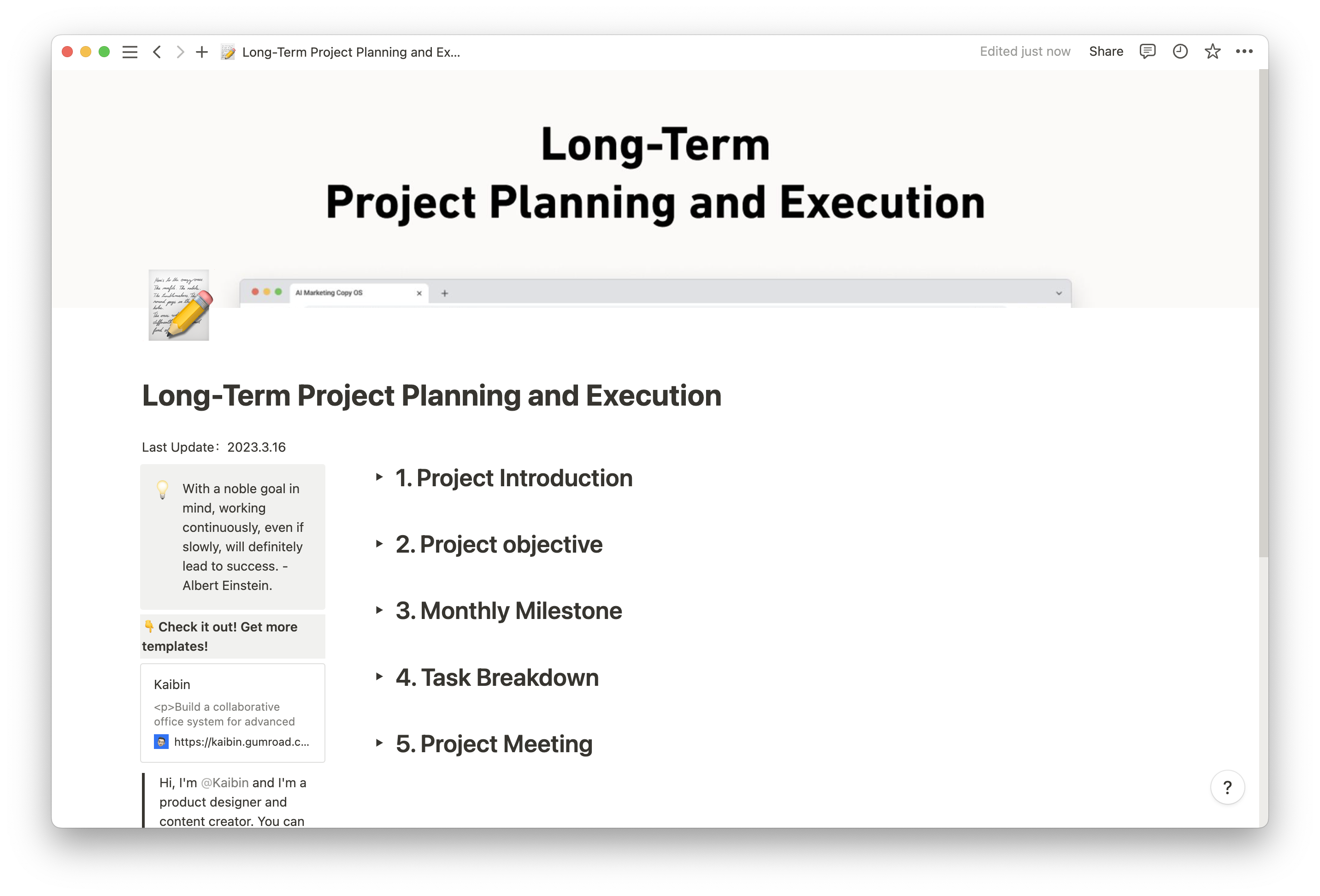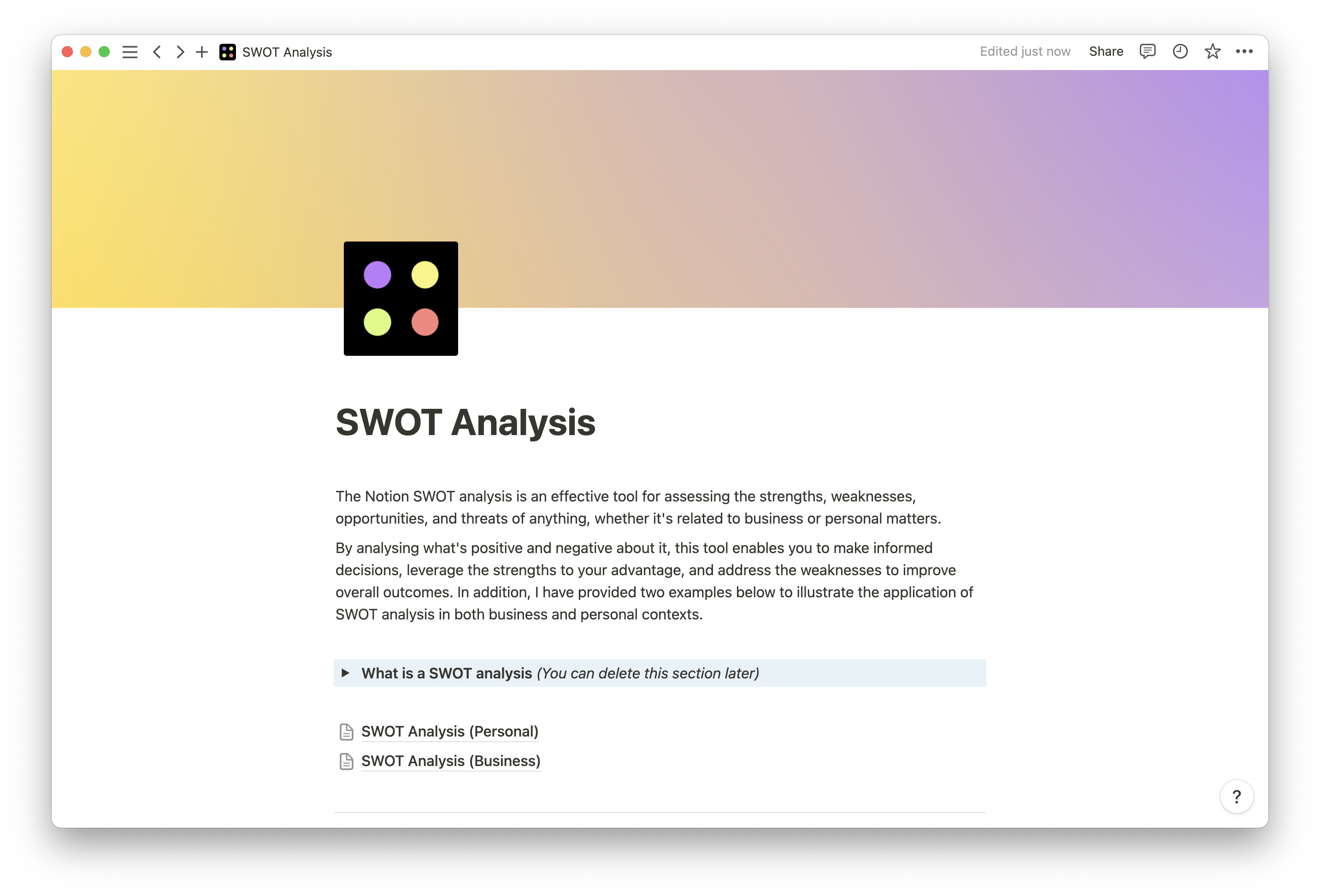It’s often said that hindsight is 20/20.
But in business, waiting for clarity to set in means missed opportunities and costly missteps.
Strategic planning models offer foresight, facilitating goal achievement through proactive and informed decision-making. And they don’t just provide an action plan with a direct route. Carefully developed models also help you anticipate obstacles and align business objectives with daily operations.
Using a strategic planning model template adds structure to the planning process, ensuring that you explore every potential avenue and account for each challenge.
What’s a strategic planning model?
A strategic planning model is a structured approach organizations use to develop their short- and long-term strategy and guide decision-making. There are several strategic planning models to choose from, and companies select one based on their needs, culture, and the nature of their business.
The chosen model serves as a framework to align an organization's vision and goals with its resources and capabilities, helping leaders make more informed decisions. During the process, you identify, analyze, and plan for opportunities and risks.
Here are some aspects of your business you can expect to uncover during the strategic planning process:
Identify and anticipate challenges with proactive action plans
Develop efficiencies for daily operations
Align work with larger business objectives and your mission statement
Measure business strategy against the company's vision statement
Create a roadmap to unite strategic management across departments
Set milestones to track consistent progress
Why do you need a strategic planning model?
Your business has goals, and a well-defined, strategic plan could be the difference between reaching them or not.
Whether you’re part of a brand-new startup with a handful of employees or a seasoned multinational company, strategy sharpens focus and unifies team efforts. The absence of a strategic plan leaves you vulnerable to unproductive misalignment, market loss, and operational stagnation.
Here are three reasons to build a strategic planning model:
Unifies vision — a strategic planning model carves a transparent guide for every team member to follow. When departments work in unison on a singular vision, their cumulative efforts push the business toward the overarching objective. Otherwise, disparate efforts can pull the organization in different directions, diluting energy and resources.
Empowers with insights — strategic planning activities analyze an organization’s strengths and weaknesses, allowing you to assess risks and opportunities. Likewise, it can help position the business within a larger market narrative, analyzing competition and potential strategies for differentiation.
Builds resilience — markets change, necessity shifts business objectives, and opportunities unexpectedly appear. You can’t predict everything that’ll happen during a strategic planning model’s timeline, but foresight can help you work productively and act confidently when you arrive at a fork in the road.
Strategic planning frameworks versus models
At first glance, strategic planning frameworks and models sound interchangeable. But a simple way to understand the difference is by imagining the construction of a building:
A strategic planning framework is your toolbox — you use a set of strategic planning tools during the initial planning stages of a business initiative. Like an architect or engineer who uses trade skills to create a cohesive vision, your team can employ different methods (like a PEST analysis or OKRs framework) to analyze your business situation and design an action plan.
A strategic planning model is your blueprint — a model lays out a step-by-step process to bring the construction to life. Just like a construction crew turns to a detailed building plan, your organization follows your strategic planning model to chart the course and ensure decision-making and workflow align with your final goals.
In the initial stages of the strategic planning process, you might employ several of the following strategic planning frameworks:
SWOT analysis — “SWOT” stands for strengths, weaknesses, opportunities, and threats and is a popular method for analyzing a business situation's positive and negative aspects. Use a SWOT analysis template to build a strategic plan that leverages strengths for growth and potential risks.
PEST/PESTLE analysis framework — a PEST analysis is a useful business forecasting tool. It focuses on external factors that bolster or block your business’s success. “PESTLE” stands for political, economic, social, technological, legal, and environmental, encouraging you to account for influences like taxes, social demographics, and communication barriers.
OKRs framework — an “OKR” is an objective and key result that establishes a set of business goals and priorities. Using Notion’s OKRs template or OKR template for small businesses, you can ensure the goals you establish are trackable and shareable for team members.
The Hoshin Kanri framework — this strategic planning tool brings the entire organization on board. With a Hoshin Kanri framework, leadership builds company-wide objectives and communicates them to individual team members, ensuring everyone’s workflow aligns with overarching project or company goals.
VRIO framework — “VRIO” stands for value, rarity, imitability, and organization. You can use this strategic planning tool to analyze your resources and competitive advantage.
Porter's five forces — Harvard researcher Michael Porter’s framework analyzes the potential performance of a product or service before it enters the market. Porter’s framework can help you measure your competitive advantage and mitigate risk against five threats, including new market players, bargaining powers of suppliers and consumers, and competitors and their products.
5 popular strategic planning models
Once you can confidently differentiate a PESTLE analysis from the Hoshin framework (and everything in between), you’re ready to move on to strategic planning models. Let’s examine five popular models to implement business strategy:
1. Basic model
A basic strategic planning model is a valuable tool for new organizations. It focuses on building a mission statement for your organization, summarizing the goals that will define and transform the business. Once you have a clear mission statement, the basic model allows you to break down goals into smaller tasks.
Organization: A start-up organic juice bar
Mission statement: “To provide healthy, delicious, and environmentally-friendly beverage options to health-conscious consumers.”
Goals:
Establish the brand as a leader in organic beverages
Promote sustainability and wellness
Attain consistent growth in revenue
Tasks:
Source high-quality, organic ingredients
Develop a sustainable and eco-friendly supply chain
Implement effective marketing strategies focusing on health benefits and environmental values
Monitor financial performance and adjust strategies as needed
2. Alignment model
This model focuses on aligning your business’s mission and resources, particularly your IT capabilities. It’s an ideal model for businesses that want to identify internal bottlenecks, optimize current resources to match their mission or analyze growth potential during business restructuring.
Organization: A burgeoning tech firm specializing in developing AI solutions
Mission statement: “To innovate and deliver cutting-edge AI solutions that empower businesses and enhance user experiences.”
Alignment focus:
Ensure that IT capabilities and resources fully align with the mission to optimize innovation and development cycles
Identify and resolve any internal bottlenecks hampering the optimal usage of resources and capabilities
Strategies:
Conduct a thorough analysis of current IT capabilities and resources to identify areas of improvement and optimization
Develop and implement strategies to enhance IT capabilities, focusing on innovation and the development of unique AI solutions
Establish feedback loops to continually assess and refine alignment between IT capabilities and organizational mission
Tasks:
Regularly review and adjust IT resource allocation to match development needs
Engage in continuous learning and development initiatives to keep IT skills and knowledge up-to-date and aligned with industry advancements
Implement Agile methodologies to optimize development cycles and promote innovation
3. Balanced scorecard
A balanced scorecard integrates strategic planning with performance measurements. This model focuses your attention on financial metrics that track operational, customer, and developmental performance. Using the scorecard allows you to understand the most effective financial resources, measuring them against metrics like stakeholder performance, internal efficiencies, and organizational capacity.
Organization: A healthcare management company striving to optimize its operations and services
Mission statement: “To deliver superior healthcare management services that optimize operational efficiency, enhance patient satisfaction, and maximize value for stakeholders.”
Balanced scorecard focus areas:
Financial metrics — use these to evaluate financial performance and investment in innovations to ensure sustained growth.
Customer metrics — employ this information to assess patient satisfaction, service quality, and relationship management.
Internal process metrics — leverage this data to examine operational efficiency, workflow optimization, and service delivery.
Learning and growth metrics — keep track of these to evaluate organizational development, employee competence, and information system efficiency.
Strategies:
Develop and implement comprehensive strategies that align operational processes with financial goals, customer needs, internal efficiencies, and organizational capacity
Continuously monitor and refine strategies based on balanced scorecard assessments to enhance performance across all domains
Tasks:
Regularly assess and adjust financial allocations to ensure operational efficiency
Implement customer feedback systems to understand and improve patient satisfaction and service quality
Foster a learning environment that encourages employee development and skill building
4. Issue-based model
An issue-based model builds on top of the basic model, a blueprint for businesses that are ready to create a more comprehensive strategic plan. Teams often use this model alongside a SWOT analysis, focusing on building strategies that prioritize the internal and external influences that impact your organization at large or a specific product or service offering.
Organization: A manufacturer specializing in sustainable packaging solutions
Mission statement: “To pioneer eco-friendly packaging innovations that reduce environmental impact and drive sustainability in the packaging industry.”
Issue-based focus:
Internal issues — evaluate production processes, resource utilization, and workforce efficiency to address any gaps or inefficiencies.
External issues — assess market trends, customer preferences, and competitor strategies to identify opportunities and threats in the external environment.
Strategies:
Develop robust strategies addressing the internal and external issues, prioritizing areas with the most significant impact on organizational goals and objectives
Formulate action plans to leverage strengths and opportunities and mitigate weaknesses and threats
Tasks:
Implement sustainable practices and innovations in production processes to address internal inefficiencies and enhance environmental friendliness
Engage in market research and customer feedback to understand external influences and adjust product offerings and strategies accordingly
Monitor the effectiveness of the strategies you implement and refine them based on evolving internal and external conditions
5. Scenario model
Effective strategic thinking takes uncontrollable external influences into account. Scenario planning, for example, helps you identify external challenges to your business, like government policies or new technology. This model is useful for companies in volatile or rapidly evolving industries, allowing you to plan for hypothetical situations that require swift execution of crisis management plans to keep with the curve.
Organization: A company specializing in renewable energy solutions, operating in a rapidly evolving and somewhat unpredictable market.
Mission statement: “To accelerate the global transition to sustainable energy through innovative solutions and advanced renewable technologies”
Scenario planning focus:
External challenges — regularly assess potential impacts of government policies, emerging technologies, market trends, and economic fluctuations to stay competitive.
Hypothetical situations — develop various scenarios representing possible future states of the industry and external environment to safeguard against change.
Strategies:
Formulate adaptable strategies and crisis management plans for each scenario to ensure organizational resilience and sustained growth regardless of external changes
Regularly review and update scenarios and associated strategies to reflect shifts in the industry landscape
Tasks:
Continuously monitor external influences and industry developments to identify new challenges and opportunities
Develop and refine contingency plans and execution strategies for each scenario to ensure swift and effective response to unforeseen changes
Foster an adaptive and proactive organizational culture to enhance agility and responsiveness in a volatile industry
Best practices for using strategic planning models
Choosing and implementing the right strategic planning model for your business requires careful consideration. Here are three tips to consider:
Perform a thorough analysis — a single framework likely can’t provide all the answers you’re looking for. Take the time to analyze your company’s needs and current reality as carefully as possible. A comprehensive analysis during the initial planning stages will inform more straightforward and efficient strategic planning.
Find what works for you — strategic planning models aren’t dogmatic. If one piece of the chosen planning tool isn’t realistic, swap it out. Think of the model you choose as a recipe for success and adjust the details when necessary.
Stay consistent — goals aren’t achieved overnight. Set a timeframe to use the chosen model consistently. Patience will help you understand how it impacts your business, allowing you to make better decisions when you adjust your plans or want to implement a new model.
Which model is right for you?
All of the model templates we’ve chosen have something in common. Regardless of your objectives, a good model should have two basic components:
A clear, templated structure for creating goals
Measurable performance structures that you can adapt to your resources
To choose the most appropriate model, clearly identify your short-term goals and long-term objectives using different frameworks. Once you’ve defined your company’s mission, choose the model that best adapts to these goals and provides you with the right metrics to measure performance.
Top-of-the-line tools and templates
Strategic planning is necessary to achieve your business goals efficiently and effectively. And with so many options, choosing the right templates is essential to turning ideas into reality.
That’s where Notion comes in. Our database of tools and templates, like this comprehensive long-term project planning and execution template, can help you plan every aspect of your business from start to finish.

